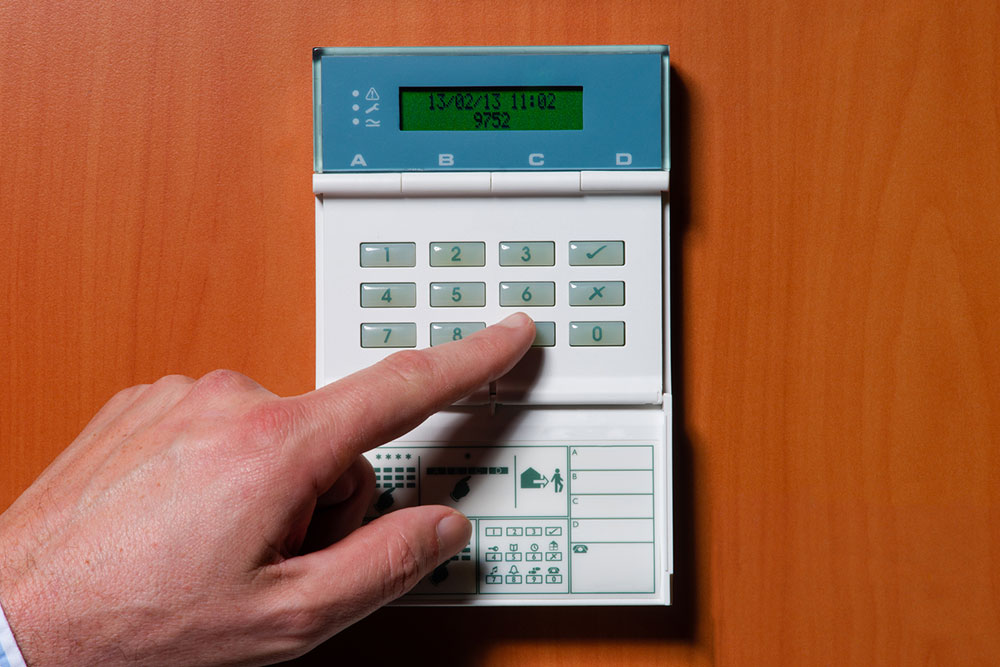9 reasons to invest in a home alarm system

A good home security system is not just a way to deter intruders, it can also protect the occupants from health hazards by detecting gas leaks, carbon monoxide poisoning, smoke, fire, and water damage. So, getting a home alarm system is not a necessary expense but a long-term investment that enhances the safety of the home, occupants, and valuable belongings. It also gives one some peace of mind by making the home safer.
Reasons to get a home alarm system
A home alarm system is one of those essential things to consider for preventing events like theft and break-ins. It also serves the following purposes:
1. Protection from intrusion
Alarm systems can detect break-ins or intrusions using a sensor network. Motion sensors of the system, installed inside or outside the property, can detect movement. Also, switches mounted on a window alarm trigger an alarm when someone opens it. If the system has a glass break detector, it has an audio sensor that can detect the sound of glass breaking. Some alarm systems come with shock sensors that can detect break-ins through the wall. Based on the detection, the system sends alerts. When the master control panel, or base station, gets an alarm and registers an event, a signal is sent to the monitoring agency. They contact the home occupants and alert the appropriate agency immediately to take action. The concerned agencies will reach the home and investigate. In this way, comprehensive home alarm systems protect the occupants and the property from intruders.
2. Protection from burglary
Valuables, like cash, jewelry, artwork, heirlooms, electronic appliances, important documents, furniture, and expensive automobiles are often found in homes. Home alarm systems can reduce the risk of them being stolen by detecting a break-in and alerting home occupants and authorities. In case the authorities do not reach the location in time, the alarm system’s video and photo surveillance can help them investigate and retrieve stolen belongings.
3. Detection of health hazards
Gas leaks from furnaces, HVACs, and water heaters can go unnoticed, exposing one to harmful chemicals that can cause health issues. An alarm system can be equipped with smoke and gas leak detectors, alerting occupants of such health hazards. Then, everyone can evacuate and contact professionals to check for leaks.
4. Monitoring seniors
While many standalone medical devices are designed for seniors to alert caregivers in case of a fall or a health issue, home alarm systems can also help family members keep an eye on seniors to seek medical assistance if they seem to be in distress.
5. Crime detection and prevention
If there has been a break-in or burglary, law enforcement agencies can use camera footage from the home security system to identify and apprehend criminals. Home alarm systems can also prevent crime, as some components of the system, like outdoor cameras and flood lights, are visible to potential intruders, deterring them from entering the home due to fear of being caught on camera.
6. Sense of security
An alarm system can help one feel at ease at and away from home. They can rest assured that their home is protected 24×7.
7. Round-the-clock monitoring
It is almost impossible to predict when there could be an intrusion, fire, or gas leak. With a smart home alarm system installed, one can now monitor the home 24×7. Also, smart home alarm systems allow users to access camera footage on devices like phones and laptops. So, parents can now connect to the alarm system through and keep an eye on the property and their children from anywhere.
8. Immediate action
Upon detecting intrusion or smoke, an alarm system alerts the authorities or a monitoring agency. As as soon as the relevant authorities get an alarm, they immediately call homeowners and the emergency services. Then, they send personnel to the home to manage and control a developing situation, like a break-in or burglary attempt.
9. Integration with other home devices
Today, alarm systems can be connected to other smart devices and appliances in the house. Also, one can remotely operate these appliances through the master control station without any delay. This makes home alarm systems easy to access and use from anywhere.
Components of an alarm system
A home alarm or security system typically consists of multiple devices that are connected to each other and monitored around the clock by an agency. Each component has a specific purpose to fulfill and is connected to other components.
Master control panel: This component connects all the components of the systems, contains all technical and personal information, and serves as the base station
Security cameras: The system comes with cameras that can be installed inside and outside the house to continuously monitor the home.
Doorbell cameras: They allow users to check who is at the door and talk to them without opening the door.
Smart locks: Security systems can come with smart locks that are equipped with high-security features like biometrics and facial recognition that make it difficult for intruders to break into the home.
Sensors: Alarm systems come with sensors that can detect movement, glass breaks, and gas and water leaks to protect the home and occupants from intruders and health hazards. Some systems come with sensors that can detect smoke.
Lights: Home alarm systems may have lights to help cameras monitor outdoor spaces at night. The lights also act as deterrents to intruders.

